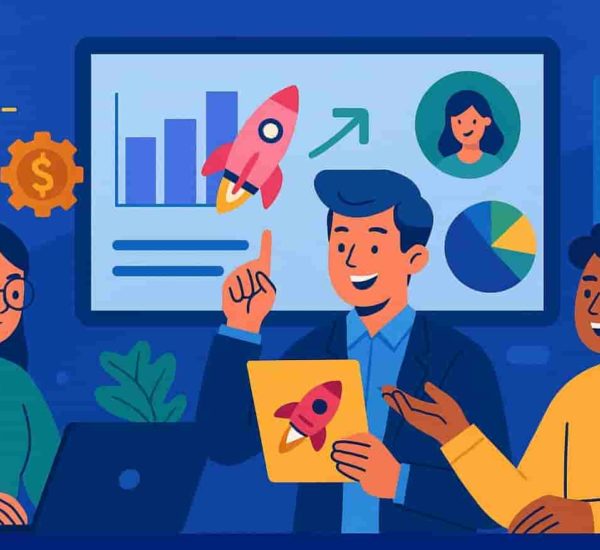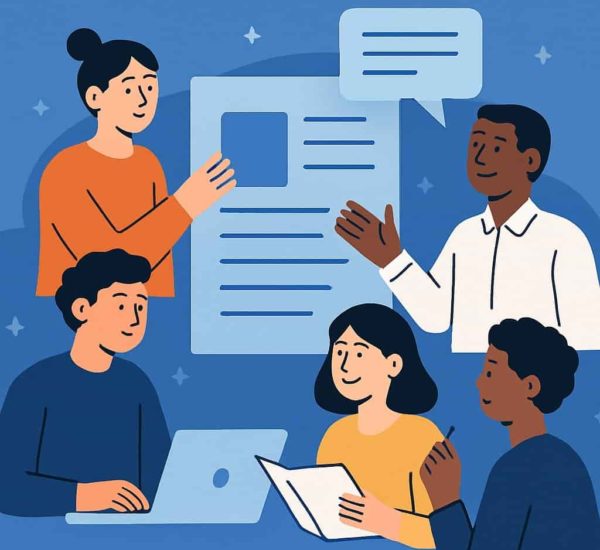In today’s data-driven world, businesses rely on insights to optimize performance—and people analytics is at the heart of this transformation in HR. But what is people analytics exactly? It’s the practice of using employee data to drive smarter decision-making, improve workforce management, and enhance overall business outcomes. From recruitment and retention to performance evaluation, HR people analytics helps organizations understand trends, predict challenges, and create strategies that foster a more engaged and productive workforce. This blog will dive into its meaning, key applications, and the tools that make it a must-have for modern HR teams.
Difference Between People Analytics and HR Analytics
The terms people analytics and HR analytics are often used interchangeably, but they have distinct meanings. HR analytics focuses strictly on employee-related data within the Human Resources department, analyzing areas like recruitment, retention, and performance. In contrast, people analytics takes a more comprehensive approach, incorporating data from finance, marketing, and customer interactions to provide a holistic view of workforce dynamics and business impact.
Moreover, HR analytics is sometimes overused, with many solutions addressing only HR-specific challenges rather than offering a broader people analytics framework that connects employee data to overall business strategy.
 The Four Types of People Analytics
The Four Types of People Analytics
- Descriptive Analytics – Examines past and present workforce data to identify patterns and trends, helping HR teams understand what has happened.
- Diagnostic Analytics – Digs deeper into the data to uncover the root causes of workforce challenges, such as high turnover or declining engagement.
- Predictive Analytics – Uses historical data and machine learning to forecast future trends, such as employee attrition risks or hiring needs.
- Prescriptive Analytics – Provides actionable recommendations based on data insights, guiding HR and leadership teams in making strategic decisions.
Examples of People Analytics in Action
Many global organizations use people analytics to improve workforce management, enhance productivity, and drive better business outcomes. Here are some real-world examples of how data-driven insights are transforming HR strategies:
- Google: Data-Driven Leadership Development
Google is a leader in people analytics, using data to refine hiring practices, optimize team structures, and improve employee well-being. One of its most well-known initiatives, Project Oxygen, analyzed management behaviors to identify the key traits of high-performing leaders. By applying these insights, Google improved leadership effectiveness across the company. - Microsoft: Supporting Managers with Data Insights
Microsoft developed Manager Hub, a one-stop platform that provides managers with real-time workforce insights. The tool offers data-driven recommendations, such as reminders for one-on-one check-ins and employee engagement sessions. By integrating this with managers’ work calendars, Microsoft ensures that leadership decisions are informed and timely. Here’s the complete video where you can watch all about it. - NASA: Mapping Talent with AI
Finding the right talent is especially challenging in an organization like NASA, where technology and knowledge constantly evolve. Using Neo4j technology, NASA built a talent mapping database that connects employees, skills, and projects through knowledge graphs. This system helps NASA identify the core skills needed for each role, map employee career paths, and align talent with organizational needs. It also improves employee training by linking specific learning exercises to the development of essential skills.
- Uber: Empowering Managers with Real-Time Data
Uber transformed its HR strategy by making people analytics dashboards accessible to managers, not just HR teams. This shift allowed leaders to make informed talent decisions faster. By adopting a user-first approach, Uber designed people analytics tools based on direct feedback from leadership. The result? A faster more effective decision-making process that reduced the two-week turnaround for talent-related decisions to near-instant insights. - Retail Industry: Optimizing Workforce Scheduling
A major retail company leveraged people data analytics to predict peak shopping hours and adjust staffing accordingly. By analyzing sales patterns and customer behavior, the company optimized employee schedules, reducing costs and improving customer satisfaction. - Finance Sector: Predicting Employee Turnover
A global financial institution used people analytics software to forecast employee attrition risks. By identifying patterns in engagement, workload, and performance, HR teams could take proactive steps to improve retention strategies and reduce turnover.
These examples highlight how businesses across industries use people analytics tools to make smarter workforce decisions, improve employee experiences, and enhance organizational performance.
Benefits of People Analytics
Implementing people analytics allows organizations to make informed decisions based on data rather than intuition. Here are some key benefits:
- Data-Driven Decision-Making
By leveraging people data analytics, organizations can move away from gut feelings and make strategic, evidence-based HR decisions. This leads to more accurate hiring, better workforce planning, and stronger leadership development. - Improved Employee and Organizational Performance
Businesses using people analytics tools can track employee productivity, engagement, and well-being, leading to targeted interventions that enhance both individual and team performance. - Better Talent Acquisition and Retention
People analytics software helps companies identify the best candidates based on skills, experience, and cultural fit. It also predicts attrition risks, allowing HR teams to take proactive steps to improve retention. - Optimized Workforce Planning
Organizations can use people analytics dashboards to analyze workforce trends, forecast staffing needs, and allocate resources efficiently. This ensures that teams have the right talent in place to meet business goals. - Enhanced Employee Experience and Engagement
Through human analytics, businesses can measure employee sentiment and engagement levels. This enables HR teams to design initiatives that improve job satisfaction, reduce burnout, and foster a positive work culture. - Cost Reduction and Increased Efficiency
By analyzing workforce patterns, companies can optimize scheduling, reduce unnecessary labor costs, and improve operational efficiency—especially in industries like retail, healthcare, and finance. - Stronger DEI (Diversity, Equity, and Inclusion) Initiatives
HR people analytics helps organizations assess diversity metrics, identify biases in hiring and promotions, and develop strategies to create a more inclusive workplace.
 People Analytics Software
People Analytics Software
Here are some popular people analytics software with links to their official websites:
- Visier – A leading people analytics software offering deep workforce insights for HR decision-making.
- SAP SuccessFactors Workforce Analytics – Provides advanced analytics and reporting tools for workforce planning.
- Microsoft Viva Insights – Uses AI to analyze collaboration patterns and improve employee productivity.
- Workday People Analytics – Delivers AI-driven insights into workforce trends and organizational health.
- Tableau for HR Analytics – A powerful data visualization tool that helps HR teams track key performance metrics.
- ADP DataCloud – Offers workforce benchmarking and predictive analytics for smarter HR decisions.
- IBM Watson Talent Insights – Uses AI and machine learning to identify workforce trends and risks.
- Crunchr – A cloud-based people analytics dashboard that simplifies HR data analysis.
- Orgnostic – Helps businesses analyze employee engagement, retention, and workforce diversity.
- Sisense for HR Analytics – Transforms complex HR data into actionable insights through customizable dashboards.
People Analytics Trends
What does the future of people analytics look like? Let’s take a look at some key trends shaping the field.
1. Remote Work and Hybrid Models
With the rise of remote and hybrid work, organizations are leveraging people analytics tools to track employee productivity, engagement, and well-being. People analytics dashboards help businesses understand remote work dynamics, optimize collaboration, and support workforce flexibility.
2. AI and Machine Learning in HR
AI-powered people analytics software is transforming HR by predicting employee turnover, improving recruitment strategies, and personalizing employee experiences. Organizations are increasingly using AI-driven insights for workforce planning and decision-making.
3. Focus on Employee Well-Being
HR teams are utilizing human analytics to monitor stress levels, workload balance, and overall well-being. Advanced analytics solutions now integrate mental health data, helping employers create healthier work environments.
4. Diversity, Equity, and Inclusion (DEI) Metrics
Companies are using people data analytics to track DEI efforts, measure inclusivity, and identify biases in hiring and promotions. Data-driven DEI initiatives are becoming essential for fostering diverse workplaces.
5. Real-Time People Analytics
Organizations are shifting from traditional reporting to real-time people analytics dashboards, enabling HR teams to make quicker, data-driven decisions. This shift improves agility in workforce management and strategic planning.
Key People Analytics Metrics and Their Uses
This table can showcase important people analytics metrics, what they measure, and how they benefit organizations.
| Metric | What It Measures | How It Helps Organizations |
| Employee Turnover Rate | Percentage of employees leaving over a specific period | Identifies retention issues and helps reduce attrition |
| Time-to-Fill | Average time to hire for open positions | Improves recruitment efficiency and workforce planning |
| Employee Engagement Score | Overall employee satisfaction and commitment | Helps boost morale and reduce burnout |
| Diversity & Inclusion Index | Workforce diversity across different demographics | Tracks DEI progress and helps build inclusive workplaces |
| Absenteeism Rate | Frequency of unplanned employee absences | Identifies workplace issues and optimizes scheduling |
| Internal Mobility Rate | Employee movement within the company (promotions, transfers) | Measures career growth opportunities and succession planning |
| Performance Productivity | Employee output relative to goals | Helps identify high performers and training needs |
Challenges in Implementing People Analytics
While people analytics transforms workforce management, many organizations struggle with effective adoption. Here are some of the biggest challenges and how to overcome them:
1. Data Privacy and Compliance Issues
Handling sensitive employee information requires strict adherence to regulations like GDPR and CCPA. Without proper security measures, companies risk legal penalties and loss of employee trust.
Solution: Organizations must implement strong access controls, anonymize data where possible, and ensure compliance with laws governing human resource management people data and analytics.
2. Lack of Data Literacy Among HR Teams
HR teams may not have the technical expertise to interpret people data analytics and leverage it effectively. Without proper training, the insights from people analytics dashboards remain underutilized.
Solution: Investing in data literacy programs and partnering with people analytics analysts or data science teams can help HR teams make data-driven decisions.
3. Resistance to Data-Driven Decision-Making
Many organizations still rely on traditional intuition-based decision-making instead of HR people analytics. This resistance limits the impact of people analytics tools in improving workforce planning.
Solution: Demonstrating real-world success stories, such as Google people analytics, can help showcase the value of evidence-based decision-making.
4. Integration with Existing Systems
Companies often struggle to connect people analytics software with HRMS, payroll, and performance management tools. Disconnected systems make it difficult to get a holistic view of workforce data.
Solution: Choosing people analytics tools with strong integration capabilities and working with IT teams can ensure seamless implementation.
5. Data Quality and Accuracy
Unreliable or incomplete data can lead to misleading insights, reducing the effectiveness of people analytics dashboards and other analytics solutions.
Solution: Establishing clear data governance policies, ensuring regular audits, and using high-quality people analytics software can improve accuracy.
Addressing these challenges allows organizations to unlock their full potential making better workforce decisions and driving business success.
Summary
People analytics uses data to improve workforce decisions beyond traditional HR. Companies like NASA, Microsoft, and Uber leverage it for better hiring, engagement, and performance. While challenges like data privacy and system integration exist, adopting the right tools helps businesses make smarter, data-driven decisions.

 The Four Types of People Analytics
The Four Types of People Analytics People Analytics Software
People Analytics Software

